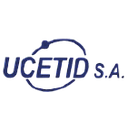Executive Secretary

XI International Scientific Conference on Agricultural Development and Sustainability
AGROCENTRO 2025
11st Symposium on Veterinary Medicine and Animal Husbandry
Abstract
The study evaluated the nutritional composition of Tithonia diversifolia meal and its effect on diets formulated with different inclusion levels (10,15,20 and 25%) in swine feed. A proximate analysis, Van Soest scheme, determination of macro and microelements, and complete amino acid profile by HPLC were carried out for nutritional characterisation. The meal presented a CP content of 26.5%, NDF of 44.5%, AFD of 44.4%, calcium 2.7%, phosphorus 0.6%, and essential amino acids such as lysine (0.85%), valine (1.07%), methionine (0.26%) and leucine (1.35%). To evaluate the impact of its inclusion, experimental diets were formulated and their bromatological characteristics were subjected to the Kruskal-Wallis test to determine the influence of T. diversifolia on the nutritional composition of the diets. Significant differences (P < 0.05) were observed in variables such as DM, OM, CP, EE, ST, NDF and AFD between treatments, evidencing a modification of the chemical composition. In addition, in vitro digestibility of DM and OM was evaluated; in vivo digestibilities were estimated, as well as DE, EM and EN for growing and finishing pigs using equations. For these variables, no significant differences were found (P > 0.05), suggesting that the inclusion of T. diversifolia meal up to 25% does not negatively affect the digestibility and energy intake of the diet. The results support the use of T. diversifolia as a viable alternative ingredient in pig diets, with outstanding nutritional value and good digestive response.
Resumen
El estudio evaluó la composición nutricional de la harina de Tithonia diversifolia y su efecto sobre dietas formuladas con diferentes niveles de inclusión (10,15,20 y 25%) en alimentación porcina. Se realizó un análisis proximal, esquema de Van Soest, determinación de macro y microelementos, y perfil completo de aminoácidos mediante HPLC para su caracterización nutricional. La harina presentó un contenido de PB de 26,5%, FND de 44,5%, FAD de 44,4%, calcio 2,7%, fósforo 0,6%, y aminoácidos esenciales como lisina (0,85%), valina (1,07%), metionina (0,26 %) y leucina (1,35%). Para evaluar el impacto de su inclusión, se formularon dietas experimentales cuyas características bromatológicas fueron sometidas a la prueba de Kruskal-Wallis para determinar la influencia de T. diversifolia sobre la composición nutricional de las dietas. Se observaron diferencias significativas (p < 0.05) en variables como MS, PB, EE, ST, FDN y FAD entre tratamientos, evidenciando una modificación de la composición química. Además, se evaluó la digestibilidad in vitro de la MS y MO; se estimó las digestibilidades in vivo, así como la ED, EM y EN para cerdos en crecimiento y finalización mediante ecuaciones. En estas variables, no se encontraron diferencias significativas (p > 0.05), lo que sugiere que la inclusión de harina de T. diversifolia hasta un 25% no afecta negativamente la digestibilidad ni el aporte energético de la dieta. Los resultados respaldan el uso de T. diversifolia como un ingrediente alternativo viable en dietas para cerdos, con valor nutricional destacado y buena respuesta digestiva.
About The Speaker

JOSE ALBERTO DE LA TORRES MOREIRA

Discussion

 Gold
Gold
 Gold
Gold
 Gold
Gold
 Gold
Gold
 Silver
Silver